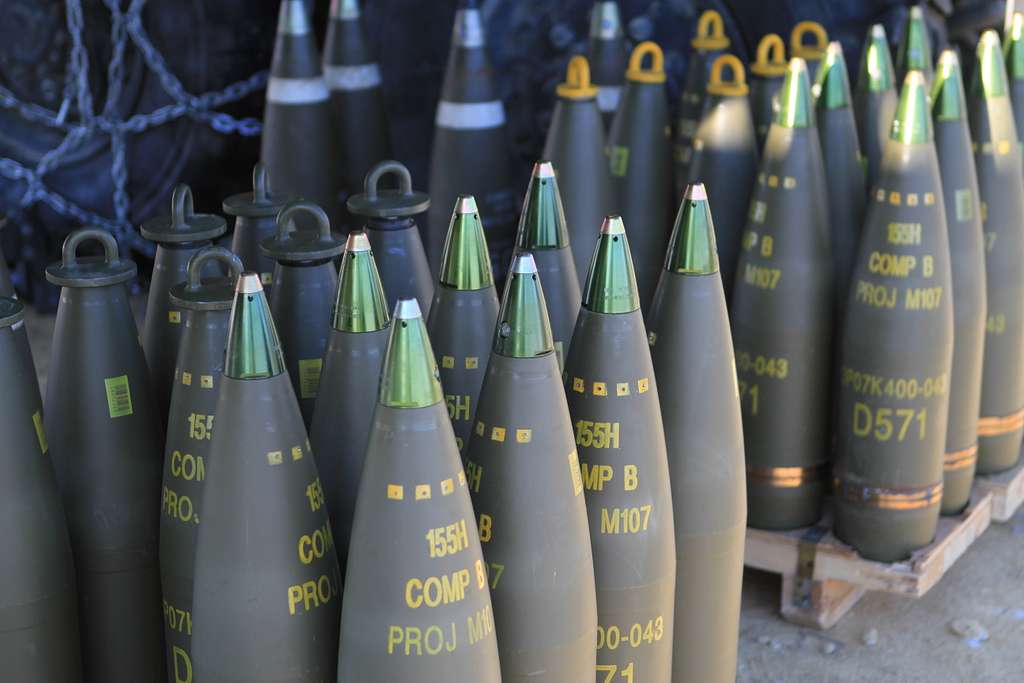Most Indian public-sector undertakings are struggling to meet the government’s export target. However, Munitions India Limited (MIL) has ‘outdone’ its targets, riding on the demand from the Ukraine-Russia war.
The Narendra Modi government has been exhorting the Defense Public Sector Undertakings to increase their export revenue to 25 percent of their total revenue.
The state-owned defense company MIL is not only meeting this target but is also engaged in talks with the US and Poland to supply artillery ammunition. Its biggest advantage has been its compatibility with NATO artillery and its proven record with the Indian Army.
Howitzers have shown their worth throughout the conflict between Russia and Ukraine. The need for 155 mm artillery ammunition has been made worse by the Middle East war.
Both sides fire a great number of rounds every day. Ukraine fires anywhere between 3,000 and 8,000 shells every day. This pace is at least twice as high for Russia, which produces over 4 million artillery shells a year. Ukrainian sources claim that Russia fired up to 40,000 rounds per day at the height of its operations.
Despite weaponry supplied by Iran and North Korea, Russian firing rate has been half as intense in recent weeks. This is due to successful Ukrainian assaults on the Russian logistical network, which drastically decreased the quantity of ammunition reaching the front, as Gen. Oleksandr Syrskyi, Commander-in-Chief of the Armed Forces of Ukraine stated earlier this year.

If Ukraine’s minimal usage is taken into account, its demand for artillery rounds per month is roughly 110,000 (Ukrainian decision-makers, when presenting the demands of their army, speak of as many as 330,000 to 660,000 shells per month).
Europe has been considering other ways to support Kyiv and obtain artillery ammunition for its troops. Because of this, European nations are now compelled to look at India as a potential substitute supplier.
India aims to become the prime manufacturing hub for advanced 155mm artillery ammunition for all types of artillery guns operated by over 75 armies worldwide.
In 2024, the Indian Ministry of Defense (MoD) selected five domestic ammunition manufacturers to supply around 2,000 155mm terminally guided munitions (TGMs) for the Indian Army’s in-service 155mm guns of 39/45/52 caliber artillery guns.
Putin Offers To ‘Break The Ice’ Between U.S & Iran In Return For Ukraine-Russia Ceasefire: Reports
The 155mm TGM is the most advanced artillery ammunition, and its technology was not available in India in the past. The Indian-made artillery ammunition is cheaper than other global options.
Each indigenously made-in-India 155mm TGM projectile costs around Rs 80 Lakhs (around US$100,000), one of the cheapest globally. Typically, a Western and Russian TGM projectile costs more than double, while US-made artillery ammunition costs three times more.
“The US has been negotiating with us to supply the artillery ammunition. We are already supplying a small caliber. Our ammunition is proven all around the world. We are already supplying to Czech, Slovakia, the UK, France, Spain, Bosnia, Romania, and Poland,” a representative of MIL told the EurAsian Times.
MIL is actively engaged in developing India’s first 155mm “smart ammunition” in collaboration with the Indian Institute of Technology, Madras (IIT-Madras). This ambitious project seeks to achieve indigenization by significantly improving the accuracy of the 155mm shell, reducing the circular error probability (CEP) from the current 500 meters to just 10 meters. The initiative also aims to enhance lethality at the terminal impact point.
After Poland and Slovakia, now another Russian neighbor, Estonia, is exploring if Indian companies can set up manufacturing lines in the country. Estonia’s Defense Minister Hanno Pevkur has said Indian companies are keen to invest in his country to produce ammunition.
The Indian companies manufacturing 155 mm ammunition are interested in investing in Estonia’s defense industry park. Estonia is one of the few countries in NATO that has consistently met the 2 percent defense spending requirement.
The United Arab Emirates and Armenia are known customers of 155 mm shells. In 2023, in a landmark deal with the Czech Republic, MIL secured a contract to supply the Czech Armed Forces with 80,000 units of 120mm High Explosive (HE) mortar shells and 50,000 units of 125mm HE tank ammunition.
NATO’s Production Capabilities
The United States produced about 14,000 155 mm artillery projectiles a month before 2022. The production scale in Europe was much smaller as the continent prioritized air power and precision-guided missiles above the manufacturing of artillery ammunition over the years. A former prime minister claimed that Poland only produced 30,000 to 40,000 artillery shells a year and was dependent on imported propellant charges.
With the US pulling the plug on sending aid to Ukraine in its fight against Russia, Germany has vowed to support Kyiv’s artillery onslaught. To maintain supplies through 2025, Germany is increasing its domestic shell manufacturing and shipping about half a million 155-millimeter shells to Ukraine.
More significantly, Rheinmetall, a German arms producer, has teamed up with a Ukrainian company to construct a new 155-millimeter shell plant in Ukraine. The complex is expected to start producing hundreds of thousands of rounds a year starting next year. This facility will be in addition to an already-existing, Norway-backed Ukrainian facility that produces 155-millimeter shells, albeit at a far slower pace.
However, Ukraine will continue to rely mostly on imported artillery ammunition for the foreseeable future. Parallel Czech—and Estonian-led programs are scouring the world for 155-millimeter rounds. They have sourced from South African and Indian industries.
Another NATO member, Lithuania began a significant effort to improve its defense capabilities by constructing a state-of-the-art artillery ammunition production facility.
It remains to be seen whether Indian MIL will be able to capitalize on its existing manufacturing capability to capture the market of NATO countries in Europe.




